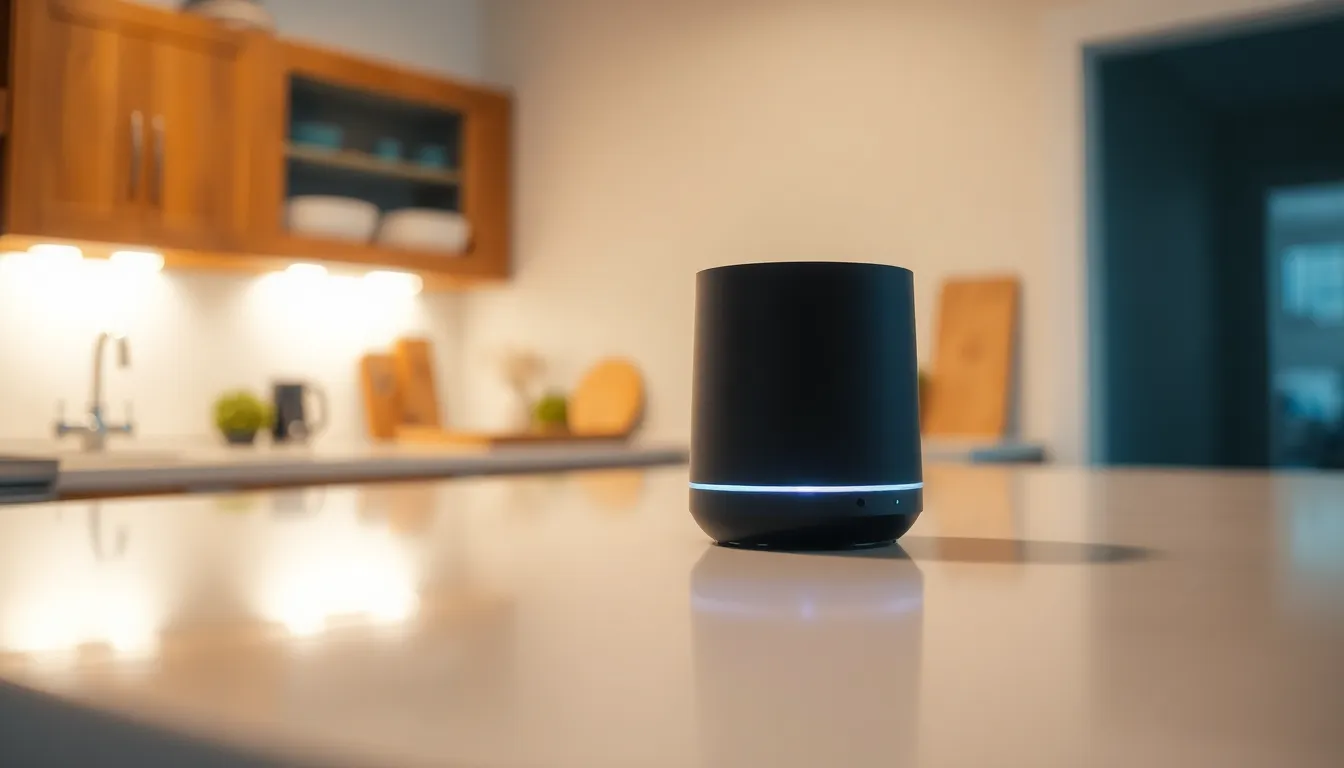In a world where fridges can order groceries and thermostats can tell you when to wear a sweater, the Internet of Things (IoT) is revolutionizing daily life. But with great convenience comes great responsibility. As smart devices multiply, so do the risks of cyber threats lurking just around the corner. It’s not just your toaster that might be a little too chatty; hackers are eager to join the conversation.
Table of Contents
ToggleUnderstanding The Internet Of Things
The Internet of Things, or IoT, represents a network of interconnected devices that communicate and exchange data. Understanding the implications of this technology is crucial for safeguarding personal and public information.
Definition And Importance
IoT encompasses a wide range of physical objects equipped with sensors and internet connectivity. These objects improve efficiency and streamline processes in various sectors like healthcare, transportation, and home automation. Importance stems from the ability of IoT devices to gather data, enabling smarter decision-making and enhanced user experiences. As businesses leverage IoT data, they notice increased productivity and operational transparency. A clear grasp of IoT’s significance is vital for addressing the security challenges it poses.
Common IoT Devices
Common IoT devices include smart home appliances, wearable fitness trackers, and connected vehicles. Smart thermostats adjust temperatures based on user preferences, promoting energy efficiency. Wearable devices monitor health metrics, providing real-time insights for users. Connected vehicles enhance navigation and safety through internet-based features. Industrial sensors monitor equipment performance, facilitating predictive maintenance. Each device contributes to a comprehensive IoT ecosystem, demonstrating the vast potential and risks associated with connectivity.
Security Challenges In IoT

The rapid expansion of connected devices presents significant security challenges. Vulnerabilities can exist in various forms, exposing critical information to potential threats.
Vulnerabilities And Risks
Weak passwords remain a primary vulnerability in IoT devices. Many users neglect to change default configurations, allowing easy access for hackers. Insecure communication channels also present risks, providing an entry point for cybercriminals to intercept data. Outdated software further complicates security; devices often lack regular updates, leaving them open to exploits. Poor standardization across manufacturers contributes to inconsistencies in security measures, creating additional entry points for breaches. Addressing these vulnerabilities is essential for users and manufacturers alike.
Real-World Examples Of IoT Breaches
Several real-world incidents highlight the dangers of inadequate security in IoT. In 2016, the Mirai botnet attack utilized insecure IoT devices to launch widespread distributed denial of service (DDoS) attacks, affecting large-scale websites. Another example involves a smart thermostat exploit that allowed unauthorized individuals to gain access to home networks. Additionally, researchers demonstrated vulnerabilities in connected cameras, revealing how hackers could obtain live footage without consent. These incidents underscore the urgent need for enhanced security frameworks to protect against continually evolving threats.
Strategies For Securing The Internet Of Things
Securing the Internet of Things (IoT) requires comprehensive strategies to mitigate risks and enhance safety across connected devices. Organizations and individuals alike can implement various measures to protect their systems.
Device Authentication
Device authentication stands as a fundamental security measure in IoT ecosystems. Each connected device needs a unique identifier to prevent unauthorized access. Implementing strong authentication protocols reduces risks significantly. Multi-factor authentication adds an extra layer, requiring users to verify their identity using multiple methods. Regularly updating firmware also strengthens device security by addressing known vulnerabilities. Manufacturers must prioritize secure coding practices to minimize weaknesses during development.
Data Encryption
Data encryption plays a crucial role in safeguarding sensitive information transmitted between devices. Encrypting data at rest and in transit ensures confidentiality, making it difficult for cybercriminals to access valuable information. Secure protocols like HTTPS and SSL/TLS help protect data during online communication. Utilizing end-to-end encryption ensures that only intended recipients can decrypt information. Regularly reviewing encryption methods also keeps data protection measures current against potential threats. Organizations should select robust encryption standards to maintain high-level security.
Network Security Measures
Implementing robust network security measures is essential for IoT protection. Firewalls serve as the first line of defense, filtering out unauthorized access attempts. Intrusion detection systems monitor traffic patterns to identify suspicious activities. Segmenting networks shields critical devices and data from broader attacks, limiting potential damage during a breach. Regular network assessments and penetration testing highlight vulnerabilities before they can be exploited. Prioritizing security updates and patches maintains strong defenses against emerging cyber threats across IoT devices.
Best Practices For Users
Securing IoT devices requires proactive measures from users. Implementing effective strategies enhances protection against cyber threats.
Regular Software Updates
Regular software updates prevent vulnerabilities in IoT devices. Device manufacturers often release patches to fix security flaws. By promptly installing these updates, users reduce the risk of exploitation. Keeping software current ensures compatibility with the latest security protocols. Monitoring for updates frequently helps maintain a secure environment, protecting sensitive data from potential threats.
Strong Password Usage
Using strong passwords is essential for securing IoT devices. Passwords should include a mix of uppercase and lowercase letters, numbers, and special characters. Changing default passwords prevents unauthorized access, as many attackers target factory settings. Creating unique passwords for each device further enhances security. Adopting a password manager can help users generate and store complex passwords, simplifying the process while fortifying defenses.
Implementation Of Firewalls
Implementing firewalls provides an additional layer of security for IoT networks. Firewalls monitor incoming and outgoing traffic, blocking suspicious activities. Users should consider both hardware and software firewalls for comprehensive protection. Configuring firewall settings appropriately can restrict unauthorized access while allowing safe data flow. Regularly reviewing firewall rules keeps network defenses up-to-date, ensuring ongoing protection against potential breaches.
Securing the Internet of Things is essential for protecting personal and public information in an increasingly connected world. As smart devices become integral to daily life the risks associated with inadequate security measures grow. By implementing strong authentication protocols data encryption and robust network security users and manufacturers can significantly reduce vulnerabilities.
Staying informed about potential threats and adopting best practices is crucial. Regular software updates strong password usage and the implementation of firewalls can enhance defenses against cyber attacks. As the IoT landscape continues to evolve proactive security measures will be vital in ensuring a safe and efficient connected experience for everyone.





